Fossil coral is essentially the preserved remains or traces of corals that existed in prehistoric times. These fossils are formed when the original skeletal structures of corals, primarily composed of calcium carbonate, are replaced by minerals or are preserved in a sedimentary matrix over geological time scales. Unlike living corals that are often colorful and vibrant, fossil corals typically present as stone and retain the structure of the coral.
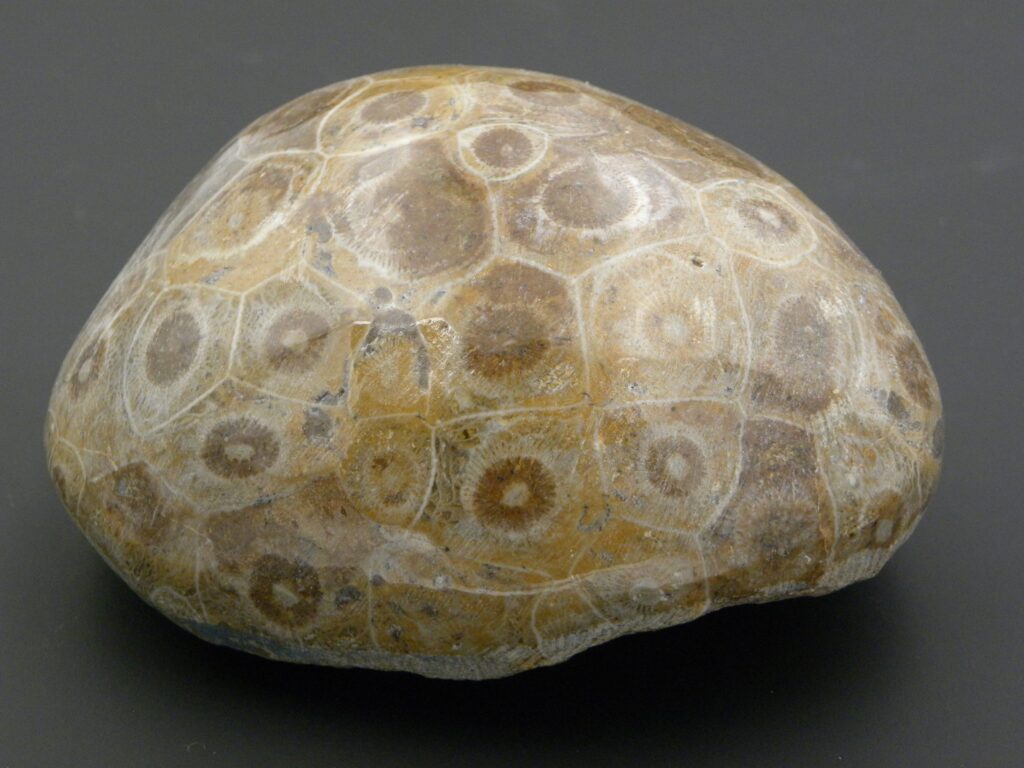
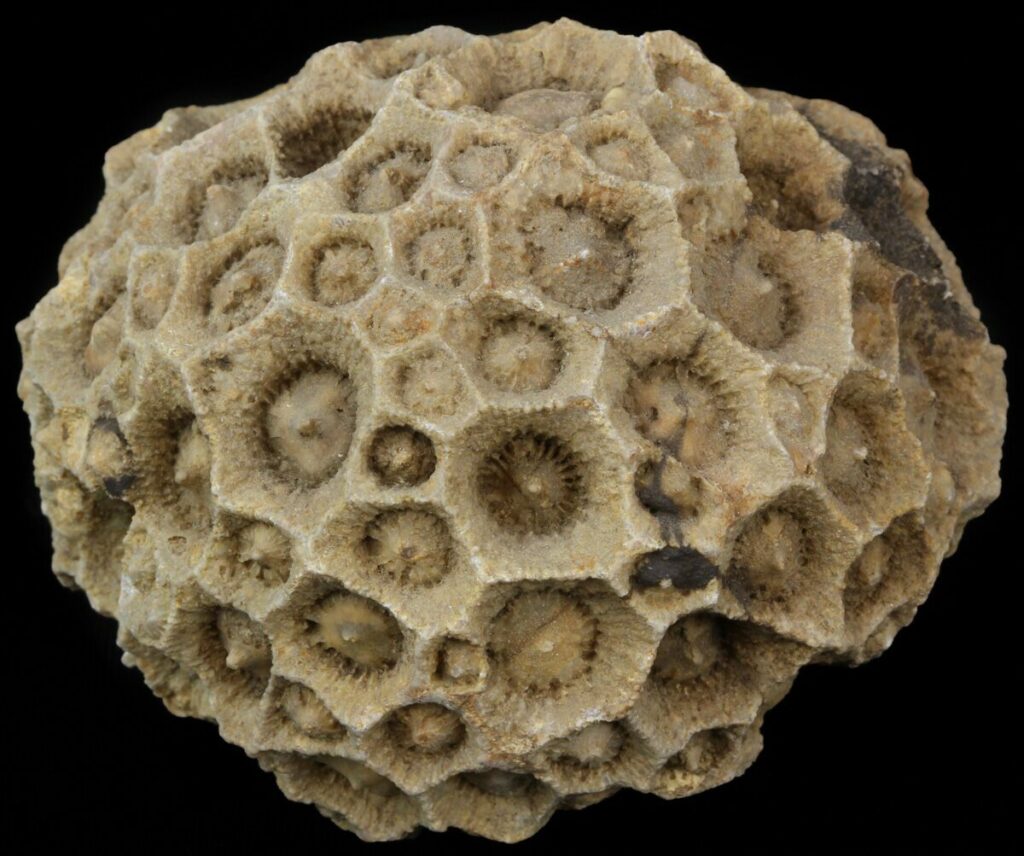
Overview of Coral Fossils and Their Formation Process
Coral fossils form through a process called petrifaction or permineralization. When corals die, their skeletal remains can become buried under layers of sediment on the ocean floor. Over time, as more sediment layers build up, the pressure and temperature conditions increase, initiating the fossilization process. Mineral-rich water percolates through the sediments, leading to the deposition of minerals such as silica or calcite into the cells and porous structures of the coral skeletons. This process gradually replaces the organic material with rock-forming minerals, preserving the original structure of the coral.
The fossilization of corals is highly dependent on environmental conditions. Not all corals that die will fossilize; the conditions must be just right to preserve the delicate structures. Most coral fossils are found in limestone and other sedimentary rocks that were once part of ancient sea beds.
These coral fossils are more than just stone replicas of ancient corals; they provide valuable information about past marine environments, including the diversity and distribution of coral species, changes in sea levels, and the chemistry of prehistoric oceans. Fossil corals are therefore essential for understanding the evolutionary history of marine life and the ecological shifts that have occurred over millions of years.
Types of Fossil Coral
Fossil corals are classified into several types based on their structural characteristics and evolutionary history. Here are three primary types of fossil corals that provide a glimpse into the diversity of coral forms throughout geological time:
1. Tabulate Corals
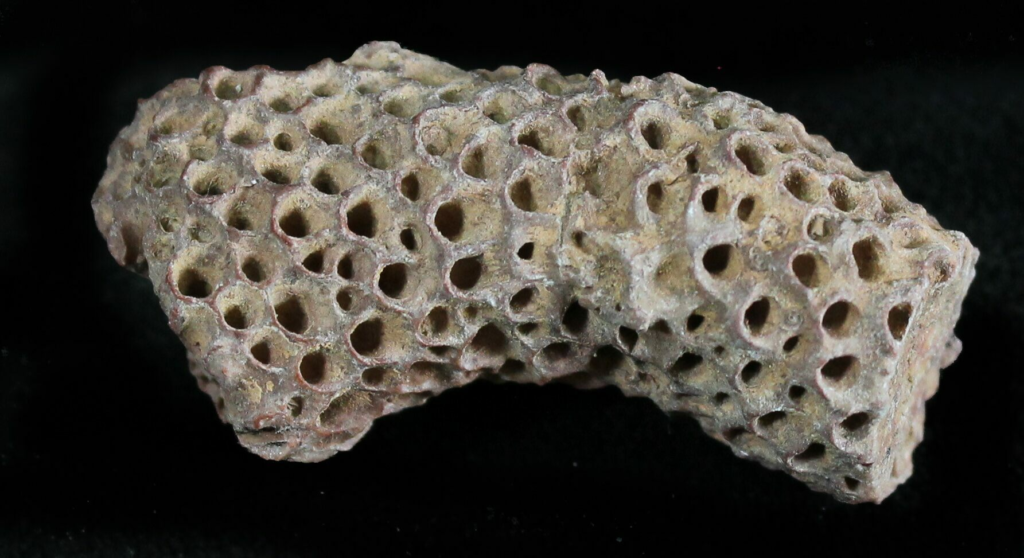
Tabulate corals, which primarily thrived during the Ordovician to Permian periods, are characterized by their horizontal skeletal structures that form tabular layers. These corals typically had colonial growth forms, creating extensive reef frameworks. The colonies of tabulate corals often feature small, closely packed corallites (the individual skeletal units occupied by coral polyps), which are connected by horizontal plates. Examples of tabulate corals include Favosites and Halysites, often called chain corals due to their distinctive patterns.
2. Rugose Corals

Rugose corals, also known as horn corals due to their horn-like shape, were prevalent from the Ordovician period until their decline in the Permian and eventual extinction during the Triassic period. These corals could be solitary or colonial, and they are distinguished by their robust, calcareous skeletons with a distinct solitary growth habit in many species. The internal structure of rugose corals shows a unique radial symmetry, which is different from the bilateral symmetry observed in modern scleractinian corals. Caninia, Hexagonaria, and Lithostrotion are notable examples of rugose corals.
3. Scleractinian Corals (Modern-day corals with ancient origins)

Scleractinian corals, often referred to as stony corals, are the primary builders of today’s coral reefs. They first appeared in the Middle Triassic period and have continued to evolve and diversify through the present day. These corals are characterized by their hard calcium carbonate skeletons and the polyps’ ability to house symbiotic algae called zooxanthellae, which is crucial for coral health and growth. Scleractinian fossils show a wide range of morphologies, from massive boulders to delicate branching forms. Their extensive fossil record helps scientists understand how modern coral reefs evolved and how environmental changes affected coral communities through time.
These fossil types illustrate the rich evolutionary history of corals, showcasing the changes in marine ecosystems and coral morphology through millions of years. Each type represents a significant chapter in the story of coral development, contributing to our broader understanding of marine biodiversity and geological processes.
Formation and Preservation of Coral Fossils
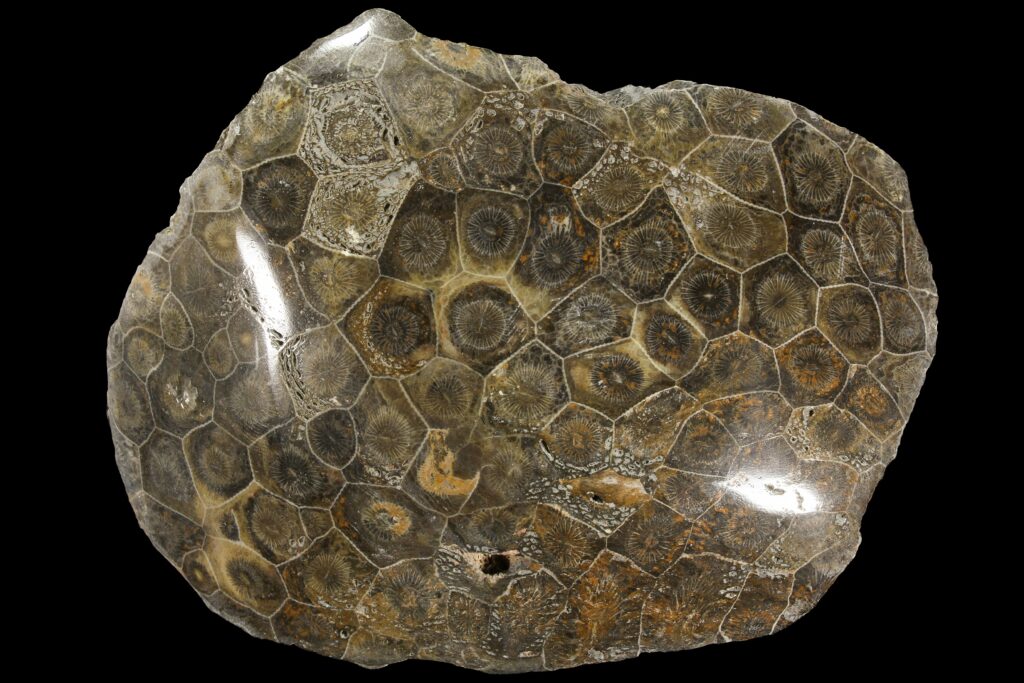
The formation and preservation of coral fossils are intricate processes influenced by specific geological conditions. Here’s an overview of how these conditions favor fossilization, the common locations and strata where coral fossils are typically found, and the processes involved in mineral replacement and preservation.
Geological Conditions Conducive to Fossilization
For coral fossils to form, several key geological conditions must be met:
- Rapid Burial: Quick burial under sediment is crucial to protect coral remains from biological decay and physical erosion. Sediment layers help isolate the coral from oxygen and destructive organisms, which slows down decomposition.
- Stable Conditions: The area where corals are buried must remain geologically stable over long periods. Tectonic activity, such as lifting or excessive erosion, can destroy the potential for coral fossils to form.
- Presence of Mineral-Rich Waters: The percolation of mineral-rich groundwater through the sediments is essential for the process of permineralization. Minerals dissolved in the water precipitate into the coral’s pores and cellular spaces, replacing the original organic materials with stone-like minerals.
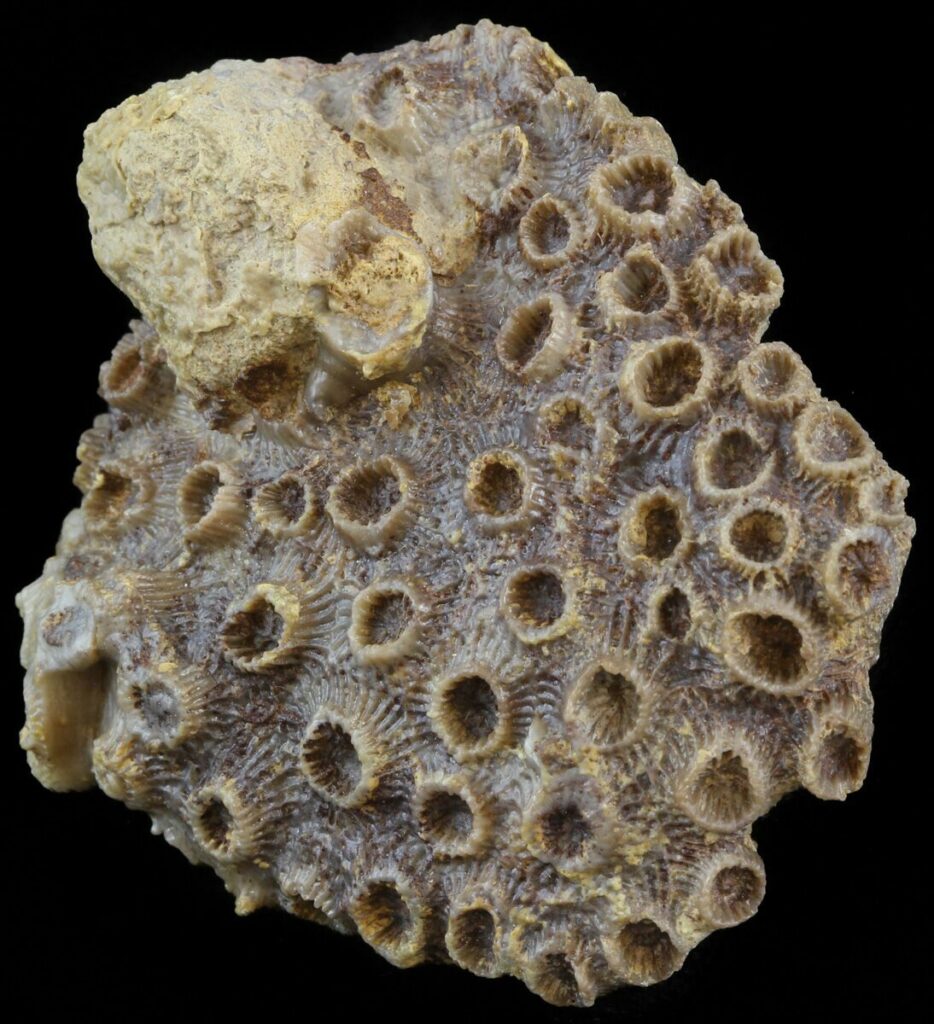
Common Locations and Strata Where Coral Fossils Are Found
Coral fossils are typically found in sedimentary rock formations that were once part of ancient seabeds. Key locations and types of strata include:
- Limestone: Many coral fossils are found in limestone, a type of sedimentary rock formed from marine organisms’ skeletal material, mainly calcite. Coral reefs that underwent fossilization are often preserved in limestone deposits.
- Shale and Sandstone: Shales and sandstones can also contain coral fossils, particularly when these rocks form in marine environments close to coral reefs.
- Geographic Regions: Notable regions for coral fossils include the Devonian reefs of the Canning Basin in Australia, the Silurian reefs in Gotland, Sweden, and the Ordovician and Silurian strata in the eastern United States.
Processes of Mineral Replacement and Preservation
The fossilization of corals typically involves two main processes:
- Permineralization: This is the most common process, where the spaces within the coral structure are filled with minerals, typically silica or calcite. This process preserves the fine details of the coral structure, allowing for detailed studies of coral anatomy and growth patterns.
- Recrystallization: Sometimes, the original skeletal material (calcium carbonate) of the coral undergoes recrystallization. This alters the coral’s original crystal structure but still preserves the overall morphology.
These processes ensure that the delicate structures of coral are preserved as fossils, often with remarkable clarity. By studying these preserved structures, scientists can reconstruct past marine environments and understand how coral ecosystems responded to historical climate changes and other environmental factors.
Uses of Coral Fossils
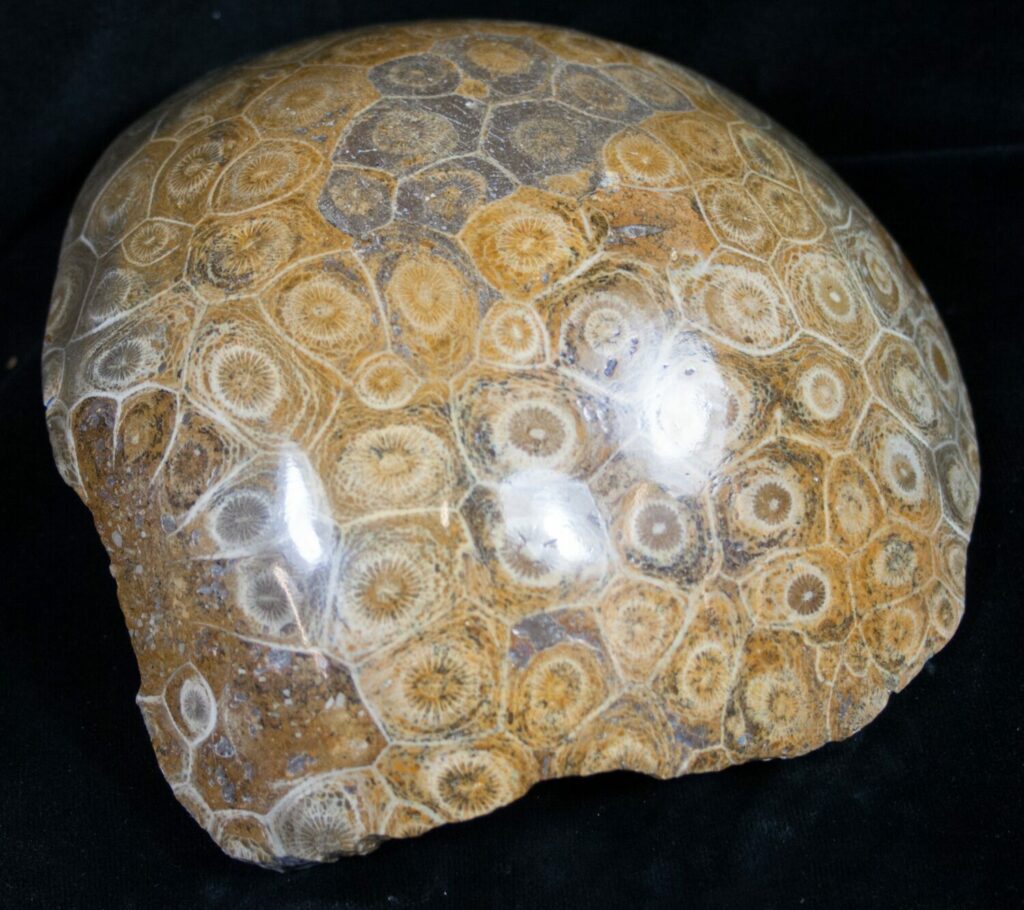
Coral fossils are valuable for a variety of scientific, educational, and commercial purposes. Their uses span across multiple disciplines, helping scientists, educators, and enthusiasts understand and appreciate the ancient world and its ecosystems. Here are some of the primary uses of coral fossils:
1. Paleoenvironmental Reconstruction
Coral fossils are crucial for reconstructing ancient marine environments. Since corals are sensitive to their living conditions, their fossils can provide insights into past sea levels, water temperatures, salinity, and clarity. Analyzing the types of coral fossils found in different geological strata helps scientists deduce how ocean conditions have changed over millions of years, offering clues about historical climate change.
2. Paleoclimatology
Corals interact closely with their environment, and their growth patterns can be influenced by water temperature and chemistry. By examining growth rings in coral fossils, similar to tree rings, scientists can infer historical climate conditions. This data is integral to understanding how climate has changed in Earth’s history and can help model future climate scenarios.
3. Geological Dating and Correlation
Coral fossils are used in biostratigraphy, helping geologists date and correlate layers of rock. Because certain types of corals lived during specific geological periods, their presence can indicate the age of the rock in which they are found. This makes corals useful as index fossils, which are fossils used to define and identify geological periods.
4. Evolutionary Biology
Studying coral fossils allows scientists to trace the evolutionary history of corals and their adaptation strategies over time. This is important for understanding how biodiversity develops in marine ecosystems and how various species of corals have emerged, thrived, or gone extinct in response to changing environmental conditions.
5. Educational Tools
Coral fossils are also valuable educational tools. They are often used in museums and educational institutions to teach about marine biology, paleontology, geology, and environmental science. Exhibits featuring coral fossils can demonstrate how life on Earth has changed and adapted over time.
6. Commercial Use
Aside from scientific and educational uses, coral fossils are also collected and sold as decorative items or used in jewelry. Their intricate and often beautiful structures make them appealing for ornamental purposes, though this use raises concerns about conservation and ethical collecting practices.
By studying coral fossils, we gain a window into the past, learning how ecosystems have responded to environmental changes. This knowledge is vital for protecting current coral reefs, which are under threat from modern-day climate change and human activities.




































